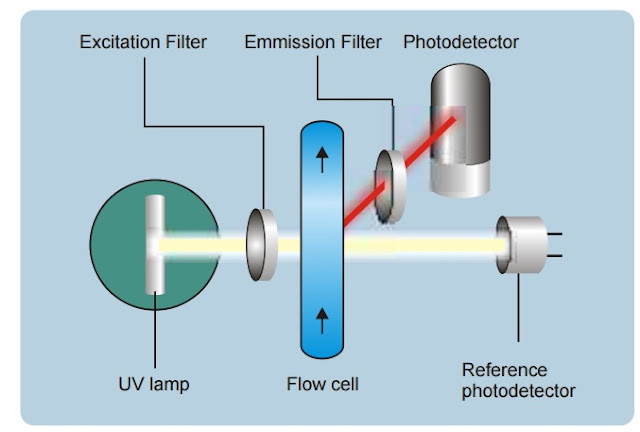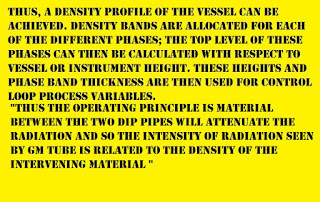Instrumentation and control Engineer https://kishorekaruppaswamy.wordpress.com/
Wednesday, 22 February 2017
BS&W ANALYZER(Basic Sediment And Water) or water in oil analyzer
Principal of operation ‘Oscillator Load Pull’ analyzers (BS&W) achieve superior performance by utilizing microwave oscillator load pull. Load pull is the term given to describe the frequency change of an unbuffered oscillator as its output load varies. Circuit components and the external load impedance determine an unbuffered oscillator's frequency. The permittivity of the materials in the measurement section, through which the microwaves propagate, determine the output load. The measurement section consists of a small solid rod mounted inside a larger diameter pipe, as shown in Figure 1. One end of the rod is connected to an unbuffered oscillator and the other end connects to the center of a welded "shorting" plug. The center rod is covered by a hard plastic sheath to prevent direct contact between the metal rod and conductive water-oil emulsions. Electrically this pipe, rod, and sheath combination is a coaxial transmission line, terminating into a short circuit. The fluids flow through the measurement section via the connections that mount perpendicular to the run section, one at each end. The microwave signal travels the length of the pipe twice; down the pipe from the oscillator, then reflects at the shorting plug and traverses back to the oscillator module
kishore karuppaswamy
The permittivity of the emulsion changes as the percentage of water in the total fluid changes. The permittivity of the emulsion is comprised of two parts - the dielectric constant and the loss. The relative dielectric constant of oil is 2.2 and of water is about 70. The loss is determined primarily by the salt content of the water. Accurate measurement of the water salinity and proper input to the electronics unit is essential for best accuracy of the Phase Dynamics Full Range WaterHydrocarbon Analyzer. In summary, the permittivity of the oil-water emulsion in the measurement section provides a complex impedance, or load. The load acts directly upon the unbuffered oscillator to force a predictable, repeatable, and precise change in frequency. This frequency is proportional to the water content of the emulsion. Temperature and loss also affect the frequency; both are used for compensation to calculate the correct water content. The microprocessor uses the measured frequency to calculate and update the water content each second.The best make of BSW analyzer is from phase dynamics
"In OLP,oscillators frequency changes when its load impedance changes.Here the oscillator operates in microwave frequency and is propageted through the measurement section which is the load and the measurement section is dipped in liquids of permittivities or the dielectric constant of the emulsion.Thus as the impedance changes due to a change in percentage of water in oil,the frequency changes.The frequency and the fluid temperature are measured and gives a value in water content"
Subscribe to:
Comments (Atom)



























